 The American rocker Rufus Wainwright stepped out before an expectant audience at Davies Symphony Hall for the world premiere of his new song cycle based on five sonnets by William Shakespeare dressed in a puffy, white Renaissance shirt embellished with what looked like a piece of squashed Victoria sponge cake, lilac taffeta trousers and patent black clogs. A silver chain-link necklace glistened between the dark hairs on his pale chest.
The American rocker Rufus Wainwright stepped out before an expectant audience at Davies Symphony Hall for the world premiere of his new song cycle based on five sonnets by William Shakespeare dressed in a puffy, white Renaissance shirt embellished with what looked like a piece of squashed Victoria sponge cake, lilac taffeta trousers and patent black clogs. A silver chain-link necklace glistened between the dark hairs on his pale chest.
Fortunately, Wainwright composes better than he dresses.
Five Shakespeare Sonnets includes a part for solo tenor voice featuring jagged atonal hops, swooping highs and lows and emotional melodic lines. The orchestration has some beautiful colors in it. A grave viola solo and sparkling glockenspiel scales are just two of the details I picked out of the texture. And the San Francisco Symphony does a wonderful job of balancing turbulence and stillness.
The only other thing, besides the soloist’s getup, which bothered me about last night’s performance, was Wainwright’s voice. Wainwright’s nasal twang always has a hint of desperation about it. At Davies Symphony Hall, it sounded overbearing and whiney amplified as it was with the swirling orchestra behind it.
As I listened, I couldn’t help but imagine how amazing the piece would sound sung by a classically-trained or jazz singer. I hope the work gets future airings with different kinds of voices. On its maiden voyage, I don’t think the the composer does justice to his own composition by singing it himself.
On a related note, it’s curious to me that the San Francisco Symphony would go to the trouble of commissioning such a famous artist to create a new work and then fail to engage the organization’s main figurehead, Michael Tilson Thomas, to lead the world premiere. Concertmaster, Alexander Barantschik was also missing. Last night, a young Englishman, Michael Francis, made his San Francisco Symphony debut on the podium and associate concertmaster Nadya Tichman sat in the first chair. The absence of the two uppermost artistic personnel of the organization suggests a lack of interest or faith in its commissioning strategy and process.

 Soprano Measha Brueggergosman performed her recital debut in San Francisco last night under the auspices of
Soprano Measha Brueggergosman performed her recital debut in San Francisco last night under the auspices of 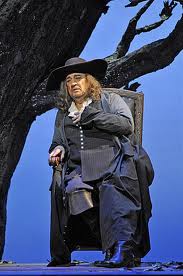 Speaking of brilliant stage performers who aren’t spring chickens anymore and yet hardly ready to screw the lids on their pots of greasepaint — as I recently did on this blog of Chita Rivera — Placido Domingo, who will shortly turn 70, shows very few signs of letting up.
Speaking of brilliant stage performers who aren’t spring chickens anymore and yet hardly ready to screw the lids on their pots of greasepaint — as I recently did on this blog of Chita Rivera — Placido Domingo, who will shortly turn 70, shows very few signs of letting up. Journalists love interviewing people who don’t toe the party line, but give an opposing view on a subject. A detractor’s opinions provide that all-important bit of tension in a story that makes it more fully rounded and readable. This opposing viewpoint is particularly important (but hard to come by) in arts journalism, where most interviewees — not to mention the reporters themselves — tend to spend their time talking about how great an artist’s work is and how excited they are about it. This is why so much arts journalism is bland and expendable.
Journalists love interviewing people who don’t toe the party line, but give an opposing view on a subject. A detractor’s opinions provide that all-important bit of tension in a story that makes it more fully rounded and readable. This opposing viewpoint is particularly important (but hard to come by) in arts journalism, where most interviewees — not to mention the reporters themselves — tend to spend their time talking about how great an artist’s work is and how excited they are about it. This is why so much arts journalism is bland and expendable.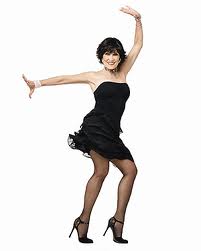 The newly-reopened Venetian Room at the Fairmont Hotel was completely packed for Friday evening’s one-night-only performance by Broadway icon Chita Rivera.
The newly-reopened Venetian Room at the Fairmont Hotel was completely packed for Friday evening’s one-night-only performance by Broadway icon Chita Rivera.  It’s always exciting when a new cultural space opens up in a city, especially in tough economic times.
It’s always exciting when a new cultural space opens up in a city, especially in tough economic times.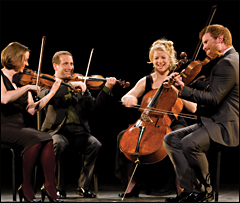 Is it a good thing or a bad thing that normal concert etiquette goes out of the window for lunchtime and commuter hour concerts?
Is it a good thing or a bad thing that normal concert etiquette goes out of the window for lunchtime and commuter hour concerts? It’s been hard to avoid baseball in San Francisco lately. Last night in particular was a symphony of blaring car horns and shrieking, gimme-five-slapping pedestrians as citizens made their excitement about the home team’s victory over the Texas Rangers strongly felt.
It’s been hard to avoid baseball in San Francisco lately. Last night in particular was a symphony of blaring car horns and shrieking, gimme-five-slapping pedestrians as citizens made their excitement about the home team’s victory over the Texas Rangers strongly felt.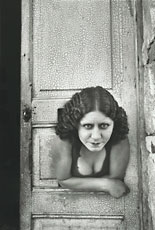 I’ve had the good fortune to experience so many cultural happenings this week that I’m quite behind on my commentary about them all. Just thought I’d use this opportunity to provide a quick roundup of three arts events that anyone in SF with a bit of cash to spend and some time on their hands should make a bee-line for:
I’ve had the good fortune to experience so many cultural happenings this week that I’m quite behind on my commentary about them all. Just thought I’d use this opportunity to provide a quick roundup of three arts events that anyone in SF with a bit of cash to spend and some time on their hands should make a bee-line for: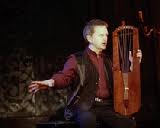 I like seeing performances in languages I barely understand or don’t understand at all.
I like seeing performances in languages I barely understand or don’t understand at all.